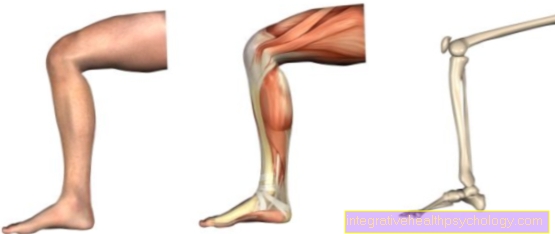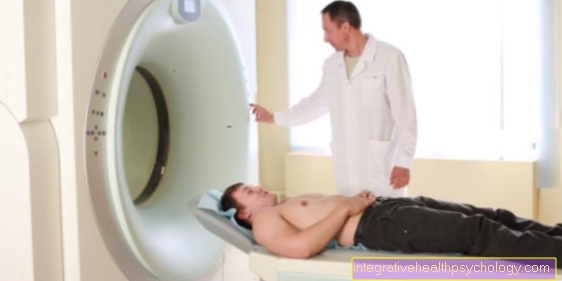MRI with a pacemaker
introduction
In Germany there are over a million patients who have a pacemaker for various reasons. A pacemaker used to be a strict contraindication to an MRI scan. Nowadays, however, a large number of MRI examinations can be safely performed on patients with a pacemaker in special centers. Newer pacemaker models are even built in such a way that they can be considered MRI-compatible. However, there are a few factors to consider when performing an MRI on a patient with a pacemaker.

Can you do an MRI with a pacemaker?
It used to be unthinkable to do an MRI on patients with a pacemaker. Today, however, it is quite possible to perform certain MRI examinations under certain circumstances.
Before the examination, it is important to check whether the pacemaker model meets the requirements for an MRI or is approved for the planned examination. The doctor receives this information from the pacemaker's device passport. It is also important to check whether the examination is really necessary or whether it is not an equivalent alternative examination such as e.g. a CT scan or an ultrasound scan. An important criterion for performing an MRI is the completed healing of the device. The implantation should be at least six weeks ago.
The MRI scan should only be performed in special centers. The patient should be fully informed about the risks of an MRI examination and the examination conditions should be specially adapted. An experienced cardiologist should be present during the examination to monitor the examination by means of an EKG and to be able to intervene in an emergency. Newer pacemakers should be reprogrammed into a special MR mode. With conventional pacemakers, certain functions should be turned off. After the examination, it is important to reset the pacemaker to its original mode and to make sure that the pacemaker is working properly.
How can I tell whether my pacemaker is MRI-compatible?
After inserting a pacemaker, each patient is given a so-called device pass. This should always be carried with the patient. In the device pass it is noted which pacemaker model was installed and whether the device meets the requirements for performing an MRI. However, the decision whether an MRI can be performed on a patient with a pacemaker should definitely be made by a doctor.
Read more on this topic: Pacemaker
Why can't you do an MRI with most pacemakers?
With many cardiac pacemakers and especially older models of cardiac pacemakers, an MRI image is not possible. This is because there may be interactions between the strong magnetic field of the MRI and the sensitive electronics of the pacemaker.
One danger is that the magnetic field can cause the electrodes of the pacemaker to overheat and damage the heart tissue. Another danger is that the pacemaker can lose its rhythm due to the magnetic field and thus the regular heart activity is disrupted. The third risk is that the pacemaker will be restarted or switched to another mode by the magnetic field.
Can you do an MRI with a defibrillator?
An implanted defibrillator, as it is used in patients with cardiac arrhythmias, is in principle a contraindication for an MRI examination. However, there are exceptional cases in which an MRI is still possible. Here, the risk should first be weighed up and what benefit the patient will get from the examination. It is also important to check whether an alternative examination method is possible.
An MRI is only possible with defibrillator models that are considered MRI-compatible. Furthermore, special care should be taken during the examination. An experienced cardiologist should be present and the defibrillator must be reprogrammed into a specific mode.
What are the risks of doing an MRI with a pacemaker?
An MRI machine works with the help of a strong magnetic field. The risks of an MRI in patients with a pacemaker are all based on interactions between the magnetic field and the sensitive electronics of the device.
Patients with a pacemaker rely on the device to monitor the heartbeat and intervene in the event of irregularities. During an MRI examination, the magnetic field can impair the function and thus potentially dangerous cardiac arrhythmias for the patient. Another risk is that the electrodes of the pacemaker can be heated up by the magnetic field. This can damage the patient's heart tissue.
Due to the risks mentioned, a risk-benefit assessment should always be carried out before an MRI examination and it should be checked whether there is another imaging method that provides the same result as an MRI.
Are certain regions particularly dangerous?
This question cannot be answered exactly. There are different pacemakers and each model is approved by the manufacturer for certain regions. There are devices that are approved for all regions of the body and with these devices MRI images can be performed without an increased risk. Other models, on the other hand, are only approved for an MRI of certain body regions.
What does an MRI-compatible pacemaker cost?
There is no precise data on the cost of an MRI-enabled pacemaker. However, the costs of inserting a pacemaker are completely covered by the health insurance company.





























